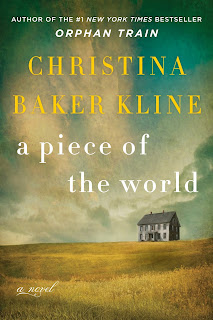As the co-worker in question, I cannot dispute Andrew's description of my excitement over The Unwritten. I'm still new to graphic novels, and, Andrew's selections for the Graphic Content book discussion are always interesting. What drew my attention to this particular selection was the very last chapter, which imagines (or exposes, as the story would have it) the life and career of Rudyard Kipling, who, despite being a talented writer in his early days, did not come to fame without the assistance of a mysterious cabal of powerful men who seem to influence - if not determine - the course of world events. (Mark Twain makes a special guest appearance, too.)
But I'm getting ahead of myself. The full title of the first volume of the on-going series by Mike Carey and Peter Gross is The Unwritten: Tommy Taylor and the Bogus Identity. The Tommy of the title is the main character in a highly popular series of books written by the reclusive author Wilson Taylor. The Tommy Taylor series is modeled on the Harry Potter books (with Tommy as Harry) complete with wizards, wands and made-up Latin spells. The authors give a nod to Rowling's work in the first chapter, which completely won me over to the series.
There is another Tommy in the story, however, the "real" one (perhaps). Tom Taylor, son of Wilson and on whom the character was modeled (or maybe not). Tom has grown up in the spotlight and shadow of his father's fame. With his father's mysterious disappearance after the release of his last book, Tom travels the convention circuit reluctantly, having failed as a musician, actor and author. It is at one of these "TommyCons" that a young woman calling herself Lizzie Hexam publicly casts doubt on Tom's identity and whether or not he is Wilson Taylor's son.
The notion that Tom is a fraud creates an explosive amount of controversy, with a level of emotion only devoted fans can muster. Tom becomes a pariah, and on his way into hiding, is kidnapped by a crazed attacker pretending (or is he?) to be Count Ambrosio, the Lord Voldemort to our Tommy. With all of the internet watching, Tom survives and is suddenly elevated to messianic status, something that turns out to be nearly as bad as being universally reviled.
But Tom's fortunes are about to change, again. Tom - now doubting his own past - begin looking for answers of his own. The search takes him to his childhood home of Villa Diodati in Switzerland (not coincidentally, this is also where Mary Shelley wrote Frankenstein - the novels are filled with these bits of literary trivia and seeming coincidences.) Tom, joined by Lizzie, finds more questions than answers, though, along with a map, a crystal doorknob and more than a few dead bodies. It seems that Tom's activities have caught the attention of some very dangerous people who don't seem to be fans of Tommy Taylor.
One of the most enjoyable aspects of this novel are the secrets that are hidden within. Hints and clues are sprinkled throughout for the sharp-eyed reader, allowing us to participate in Tom's search for the truth. Much like our hero, if we look deeper into the story, we can perhaps find out what's really going on. Some of these clues - such as Tommy Taylor's name being printed in blue - might turn out to be nothing (this isn't repeated in the later novels). However others - especially those that feature Tom's pursuer Mr. Pullman and what becomes of objects he touches with his wooden hand - provide excellent foreshadowing.
 |
| Sue Morganstern and Mr. Pullman - The letters that appear in the clay seems to spell "man made vessel". Hmm. |
The sixth volume in the series, Tommy Taylor and the War of Words, is set for release in October. In the meantime, we'll be talking about The Unwritten at the next Graphic Content book discussion on Tuesday, August 14th at 7:00 p.m. Come join us and find out if, in the words of Count Ambrosio, stories are the only thing worth dying for.
~ Allison, Adult Services































